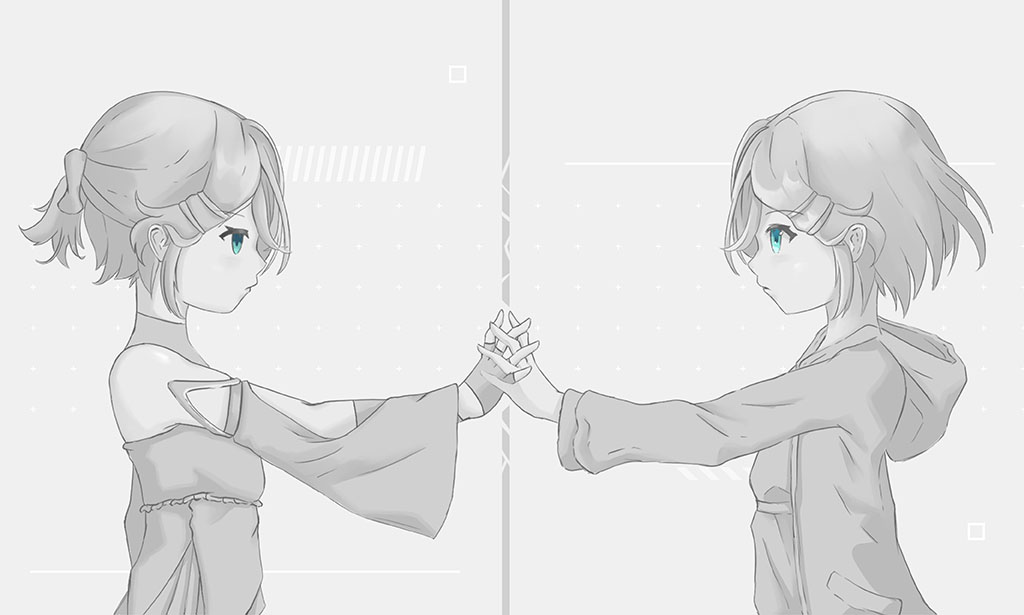
Character design, one of the most popular mediums in the field of creative multimedia, ranges from aesthetic appeal to an affinity for the characters. Recent research has created a basic standard for a good character design. For example, storytelling via a character requires that they be viewed as relatable, believable, and empathetic.
This article explores how a character conveys and aids in the development of a story and the value behind creating believable and relatable characters.The data comes from various demographics via an online survey as well as a visual analysis. The results of these findings indicate that although the general audience may not have experience in design or media, they are able to appreciate well-developed characters. The visual analysis also indicated that recent characters, designed to carry a fair trace of storytelling and elements, made them seem believable and/or life-like. Future designers will likely consider developing characters who are deeper and/or more meaningful.
Good character design relies on a well-considered personality with convincing visuals that resonate with the ongoing narrative to keep the character interesting. Brenner (2016) explains that it is in the familiarity with these characters that we can empathize with regardless of whether the character is human or not. But why does representing human qualities in a character make it that more appealing to the audience? What about witnessing a character’s growth causes the audience to empathise more with a particular character? Exploration of the appeal factor of a character that has a design or appearance that is resonant with the narrative can help enrich the story experience.
Characters are a crucial element in storytelling in any medium, regardless of context, lore, or setting. Having a well-designed central protagonist draws in viewers. Often these protagonists are designed to be the shining knight or underdog turned hero who is meant to be a driving force for determination, strength, and perseverance. In essence, the protagonist is characterised as the one who pursues the main objective of the story.
Audiences often take for granted or rather, overlook the fact that when a character goes through growth and change, they do something that is not representative of them. When they have a physical visual flaw such as a scar or missing limb that alludes to a past mistake, it creates an avenue for improvement, and by extension, a more layered character grounded in reality. It is when these characters prevail despite the circumstances or persevere despite the chaos that they really resonate with the audience. It is through these irregularities that the audience often empathizes with the characters the most.

Almost sixty percent of an audience pays attention to how a character looks (through a variety of elements including their attire, stature, mannerism, and involvement in the story) and enjoy characters with designs that change in accordance to a narrative or situation. They felt that this gives a feeling of progression in the character, added more dimension, and gave a sense of the maturation and development of the character by the conclusion. This can be attributed to investment and empathy in the character which happens when a character goes through situations and/or has a familiar goal that the audience empathises with.
This sort of storytelling leaves an impression with the audience that is portrayed in later appearances. This impression can also vary and can be somewhat related to how much they know of the character and how much they can relate or empathise with them. By using existing stereotypes from the real world and applying them to character designs creates familiarity that can be relatable by the audience. Characters are essentially an extension or mirror of the world we know and we empathize with characters because we too, are characters that then encourage empathy. This response or empathy can be attributed to multiple theories. One is in the area of psychology which describes a methodology of creating a character that carries a convincing human-like personality that also influences their outward behaviour and appearance. This setup might also consist of backstory, motives, attributes, and minor habits. Should the designated personality or setup be synonymous with some of the viewer’s own, this could spark an affinity for the character, and thus, make it such that the viewer supports the character in question and in some cases, even sees themselves as the character.
Aside from psychological relatability, there is also the theory that the viewer is drawn by the design of the character where inner personality can influence outer appearances. A viewer often relates to the stereotypes established in the real world for reference when observing a character. This suggests that it is possible for a viewer to be drawn to the aura that a character exudes from their outward appearance and actions.
Relating a character’s design to a story narrative can improve a character’s potential to appeal to the audience with varying rates of success depending on what is being represented. The state of appearance of a character can have new meaning for some observers and increase empathy for the character. Creating characters that can invoke empathy and soul rather than being superficial requires many working parts in order to make this kind of character design successful or effective. Nuanced character design enhances a character’s appeal and has deeper stories attached.
The actual journal article was published on KREATE (A Regional Design & Education Journal on Culture, Future Making & Social Design). For more of an in-depth read click here.
